| |
|
|
| |
|
VISITS |
|
755980 |
|
Copyright 2013
waypoints.ph |
|
|
Click on any of the images to see the enlarged copy and narratives of the photo.
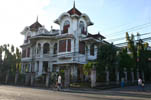
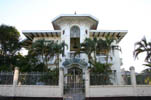
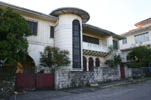
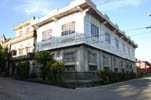
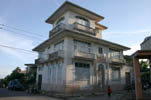
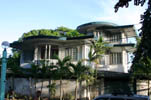
SARIAYA ANCESTRAL HOUSES
Sariaya in Quezon Province is synonymous with those big, beautiful ancestral houses that define the elite and affluent center of town in the pre war years . . . . . comprised by the imposing 1748 Saint Francis of Assisi Parish Church, the once symmetrically-designed Park containing the graceful Glorita and Rizal Monuments commissioned by the then very active socio-civic local organization Kapisanang Muling Sumilang and crafted by Kapampangan-turned Sariayahin furniture and monument maker Mr. Eusebio Cortez which was inaugurated on Rizal Day, December 30, 1924, and the 1931 Municipio designed in the Art Deco style by the National Artist for Architecture Juan Arellano. According to UP College of Architecture Professor Jojo Mata, who is part of the interdisciplinary Sariaya Community Empowerment Research Team on Sustainable Tourism, the Manila Post Office building belongs to Juan Arellano's work with the Neo-Classical while the Metropolitan Theater is a fine example of his Art Deco creations. Professor Jojo Mata enumerated other notable Art Deco showcases, not all of the Arellano genre, as the Rizal Memorial Stadium, FEU Building, Lyric and Ideal Theaters, the Tomas Mapua residence as well as the erstwhile Jai Alai and the old FEATI Buildings, among others. Apparently, it was a great source of pride and a social statement among the knowing Sariayahins of the time that their small town in Tayabas Province was able to afford the well-known US-trained architect's services.
In Old Sariayahin lingo, that area called the Tisaan was the enclave of the Taga Gitna or the rich landed gentry who had the fortune of riding the crest of the coconut boom years when the world demand for oil extracted from copra was very high.. They had so much money that they resolved to renovate their old 19th century Filipino - Hispanic houses into those eye-catching residences exquisitely crafted by Batanguenyo and Kapampangan carpenters and artisans, who at times worked under the aesthetic supervision of foreign-trained Filipino architects like Juan Nakpil and Andres Luna de San Pedro. These ancestral houses usually had brick roofs over awe-inspiring, opulent exteriors of first rate building materials that can be found nowhere else in the old province of Tayabas. The interiors of these houses were a feast to the senses, with huge intricately carved wooden furniture of Narra that cannot be moved outside because they were crafted indoors, intermingling with exquisite fixtures coming from Europe and America. One of the grand houses featured lovely and delicate glass etchings on its doors by Kraut, a noted German artist who did awesome masterpieces in glass at the San Beda Chapel and at the San Sebastian Church according to Professor Mata. Others had prayer rooms containing the heirloom Santos that at times graced the town's grand traditional processions during Good Friday, the erstwhile three-day town Fiesta from September 13 , and the May 15th harvest festival in honor of the Spanish patron saint San Isidro Labrador, all of which were very resplendent in their silver-plated carrozas during their feast days. The rich Sariaya philanthropist Donya Margarita Rodriguez whose old house with intricate wooden interiors was once located along Calle Rizal, behind the Glorita monument on the east side of the park, owned the Ninya Maria or the Child Mary, a small yet very expensive Santo whose face and hands accordingly were of ivory, dressed in resplendent golden dress, whose very expensive crown and fineries were of heirloom origin, and which upkeep during its feast day of September 15th was cared of by the proceeds from its very own landholding or Bienes.
Some of these stately houses became venues for fabulous celebrations that featured local and foreign dignitaries such as the erstwhile very big house of Gobernadorcillo (town Mayor during the Spanish times) Roman Reynoso along Calle Argente corner Bonifacio that accordingly served as the venue for the visit of then American Governor General of the Philippines Francis Burton Harrison sometime in the 1920s, with well known officials of the Tayabas provincial government gracing the occasion. Moreover, it is one of the first houses in town to have electricity in the 1920s, care of the so-called Delco Lights, the forerunner of the electric generator, and old residents remember how its outlines were fitted with countless bulbs that were lit at night during the occasion of the three-day town fiesta thereby turning the house into a great visual attraction. Others like the old brick-roofed house of Gobernadorcillo Venancio Rodriguez served as the temporary Municipal Building when the old Municipio was turned into a school for young students under the tutelage of the Thomasites, the first American teachers who came into the country aboard the ship Thomas. The beautiful two-storey house of Don Emiliano Gala, the very first deputy of the second district of Tayabas Province during the First Philippine Congress of 1907 had a very large roofed veranda ringed with wooden balustrades having intricately-designed double arches, an attractive feature it shared with the Gobernadorcillo Roman Reynoso house that was even more grandiose with its triple arches. Meanwhile, the northern wall at the second floor of the three-storey house of Gobernadorcillo Lucio Rodriguez has six paintings depicting how the center of Sariaya looked when most of the park was still part of the big patio and the old convent, today's St. Joseph's Academy, was still on the west side of the church. Those were the days in the early 20th century when the original brick inlaid masonry topped by large blocks of adobe were still visible in the church walls and the area where the beautiful Governor Natalio Enriquez house now stands was still a vacant lot owned by the 1910 Sariaya Presidente (town Mayor during the American period) Pastor Espinosa.
Sariaya's fabulous ancestral houses truly defined an era of affluence far removed from that of the present, when the characteristic old Filipino-Spanish architecture was renovated by its very rich owners and transformed with foreign influences like the then prevailing Art - Deco style through the expertise of some of the country's top American and European-trained architects. Indeed, those were the days when the rich landowners of Sariaya sought to impress one another and the outside world, and they expressed it not only through their ostentatious lifestyle but more so through the ultimate, the architecture of their very own beloved shelters. Accordingly, Sariaya and the Sariayahins themselves earned a reputation for ostentation, affluence and discriminating taste in this part of the country, and the town had a very distinct foreign look and feel about it.
A sad and humbling footnote to all of these was the occurrence of four great fires in the town's history . . . in 1930, 1944, 1951 and 1961, destroying much of the architectural grandeur of Old Sariaya, that now can only be glimpsed at in the old black and white photos of the period. However, a few of them still remain today as tangible souvenirs of a bygone yet peculiar time in the history of this heritage-rich community, the only Mount Banahaw town in both Laguna and Quezon provinces with a sea coast.Waypoint narrative by: wxrllbhq 2009 follow wxrllbhq on Facebook
|
|
|